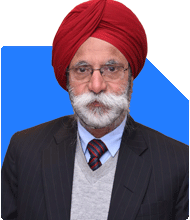24-Year-Old Aman Seeks Investment Advice for Early Retirement
Ramalingam Kalirajan |10219 Answers |Ask -Follow
Mutual Funds, Financial Planning Expert - Answered on Jan 16, 2025
He has an MBA in finance from the University of Madras and is a certified financial planner.
He is the director and chief financial planner at Holistic Investment, a Chennai-based firm that offers financial planning and wealth management advice.... more

Hello sir , My name is aman and I'm 24 years old , I have been investing in mutual fund for 1.5 years (SIP amount - 3000), I'm working in bank and preparing for CFP as a profession. I'm earning 35k every month, moreover my 70% salary goes into expenses,rent , as I live with my family. Just need to know how much amount should I invest and which asset class if I wanna retire after 40 years
Monthly Investment Strategy
Current SIP: Rs. 3,000 per month is a good start, but to accumulate enough wealth for retirement, you may need to increase your monthly investment.
Ideal SIP Amount: Considering your income and expenses, I would recommend trying to allocate at least 20-30% of your monthly income for SIPs. This would be about Rs. 7,000-10,500 per month.
Flexibility: As your income grows, try to increase this amount. Over time, increasing your SIPs even marginally will have a significant impact.
Asset Allocation
Equity Mutual Funds: As you are young, a major portion of your investment should be in equity funds. Equity funds offer higher returns over the long term, but they come with short-term volatility. Around 60-70% of your total investments should be in equity mutual funds.
Hybrid/Balanced Funds: 10-15% can be invested in balanced or hybrid funds that invest in both equities and debt. These can reduce some risk and offer stable returns.
Debt Funds: As your goal is to retire early, keeping 10-20% of your investments in debt or fixed-income funds will provide stability to your portfolio. These funds offer more predictable returns, though lower than equities.
Other Investments: If possible, you can consider PPF (Public Provident Fund) for long-term savings. The tax benefits of PPF can be useful, especially for retirement planning. However, do not rely solely on PPF for your retirement.
Asset Classes Overview
Equity Mutual Funds: Investing primarily in actively managed equity funds will allow you to harness the potential of the Indian economy’s growth. These funds are better suited for long-term wealth creation, which aligns with your 40-year time frame.
Hybrid Funds: These funds provide a balanced approach, investing in both equity and debt. It helps to balance risk while still participating in the growth of equities.
Debt Funds: Though offering lower returns, debt funds are useful to generate regular income in retirement. They are also tax-efficient when held for the long term.
SIP Growth Expectation
Assuming an annual return of 12-15% from equity funds, your Rs. 7,000-10,500 SIP can grow significantly over time. The key will be consistency, and increasing SIP amounts as your income increases.
It’s important to review your portfolio annually to ensure that your investments are aligned with your goals.
Emergency Fund
Before aggressively investing, make sure to set aside 6-12 months' worth of expenses in a liquid, safe asset like a savings account or a liquid mutual fund. This will help you avoid withdrawing from your investments in case of emergencies.
Taxation on Mutual Funds
Equity Mutual Funds: Long-term capital gains (LTCG) above Rs. 1 lakh are taxed at 12.5%. Short-term capital gains (STCG) are taxed at 20%.
Debt Funds: Taxed as per your income tax slab. Holding debt funds for more than three years will result in lower tax due to indexation benefits.
Lifestyle Considerations
Expenses and Savings: Since 70% of your income goes towards expenses, find ways to reduce unnecessary expenses. This could include reviewing your subscriptions, cutting down on luxury purchases, and making sure that your family’s spending is within control.
Income Growth: As your career progresses, try to increase your SIP contributions and consider ways to supplement your income, such as by exploring other financial planning avenues or side businesses.
Tracking Progress
Review Annually: Your investments should be reviewed regularly to ensure they are performing well. Also, consider rebalancing your portfolio to ensure that your risk profile is aligned with your age and goals.
Increase SIPs with Growth: Once your salary increases, aim to gradually increase your SIPs. This is crucial for achieving the growth required to meet your retirement goal.
Final Insights
You are off to a good start by investing in mutual funds, and with regular SIPs, disciplined saving, and the right asset allocation, you can achieve your goal of retiring early. It’s important to be consistent and review your investments every year. As your income grows, increasing your SIPs will significantly boost your retirement corpus.
Best Regards,
K. Ramalingam, MBA, CFP,
Chief Financial Planner,
www.holisticinvestment.in
https://www.youtube.com/@HolisticInvestment
You may like to see similar questions and answers below
Ulhas Joshi | Answer |Ask -Follow
Mutual Fund Expert - Answered on Apr 10, 2023
Ramalingam Kalirajan |10219 Answers |Ask -Follow
Mutual Funds, Financial Planning Expert - Answered on May 20, 2024
Ramalingam Kalirajan |10219 Answers |Ask -Follow
Mutual Funds, Financial Planning Expert - Answered on Jun 19, 2024
Ramalingam Kalirajan |10219 Answers |Ask -Follow
Mutual Funds, Financial Planning Expert - Answered on Jul 17, 2024
Ramalingam Kalirajan |10219 Answers |Ask -Follow
Mutual Funds, Financial Planning Expert - Answered on Nov 04, 2024
Dr Nagarajan J S K |2257 Answers |Ask -Follow
NEET, Medical, Pharmacy Careers - Answered on Aug 11, 2025
T S Khurana |502 Answers |Ask -Follow
Tax Expert - Answered on Aug 11, 2025
T S Khurana |502 Answers |Ask -Follow
Tax Expert - Answered on Aug 11, 2025
Nayagam P P |10168 Answers |Ask -Follow
Career Counsellor - Answered on Aug 11, 2025
Radheshyam Zanwar |6277 Answers |Ask -Follow
MHT-CET, IIT-JEE, NEET-UG Expert - Answered on Aug 11, 2025
Nayagam P P |10168 Answers |Ask -Follow
Career Counsellor - Answered on Aug 11, 2025
Nayagam P P |10168 Answers |Ask -Follow
Career Counsellor - Answered on Aug 11, 2025
Nayagam P P |10168 Answers |Ask -Follow
Career Counsellor - Answered on Aug 11, 2025
Nayagam P P |10168 Answers |Ask -Follow
Career Counsellor - Answered on Aug 11, 2025
Nayagam P P |10168 Answers |Ask -Follow
Career Counsellor - Answered on Aug 11, 2025





















